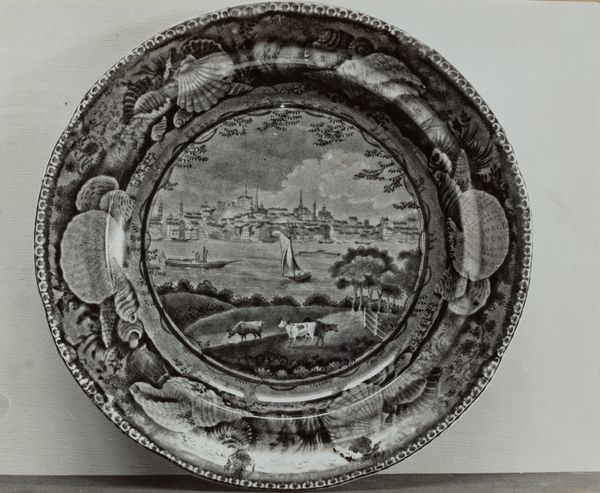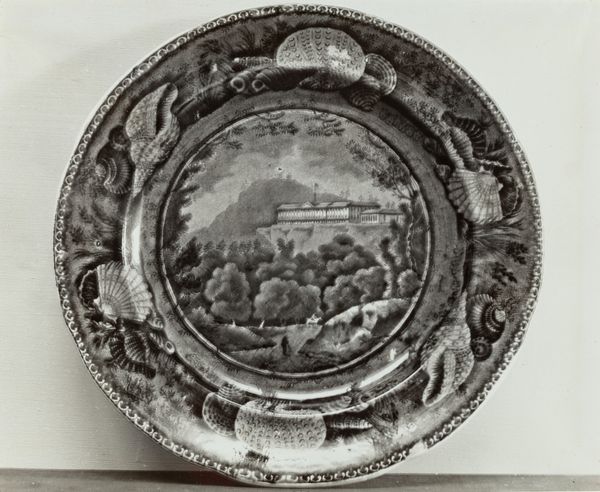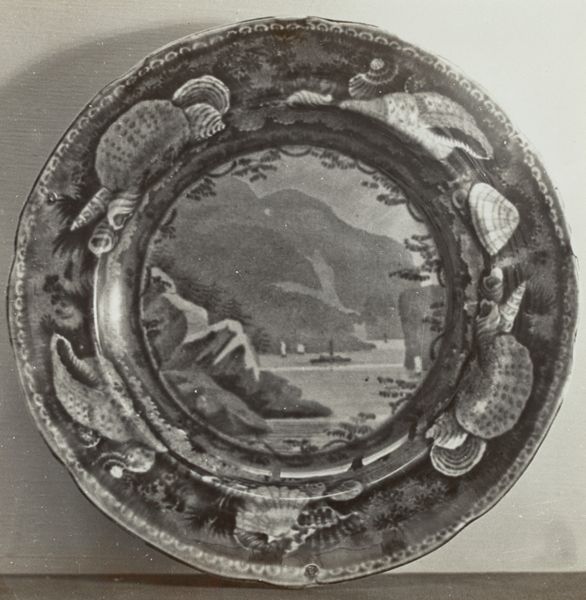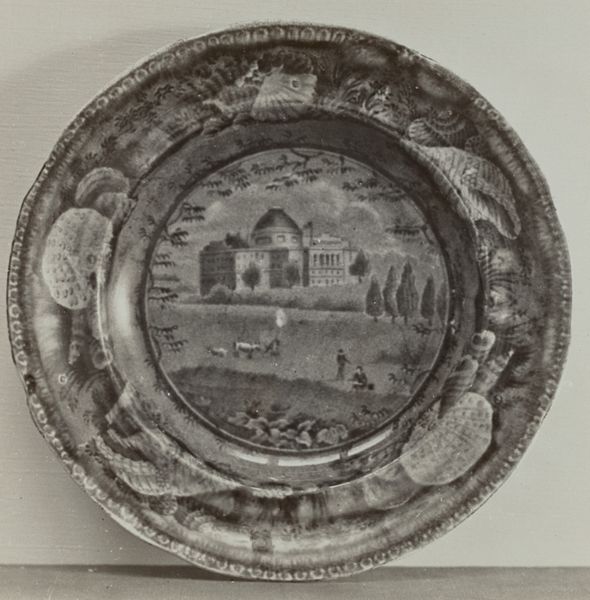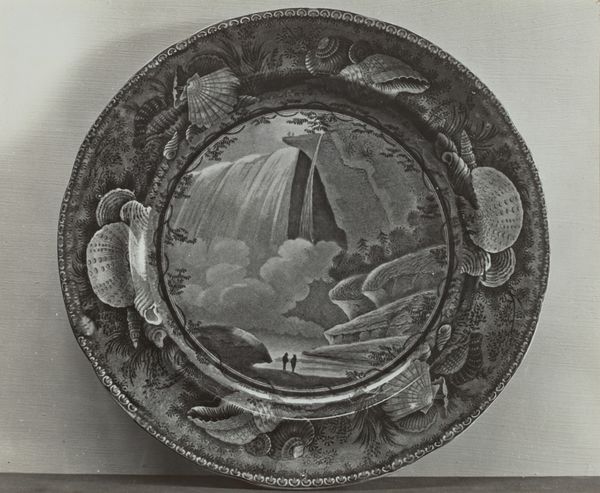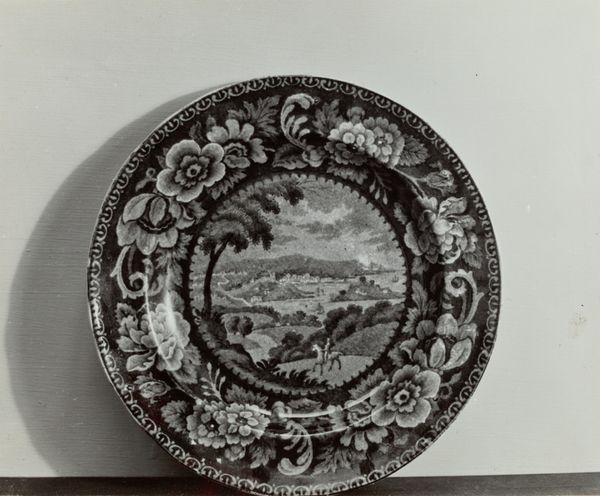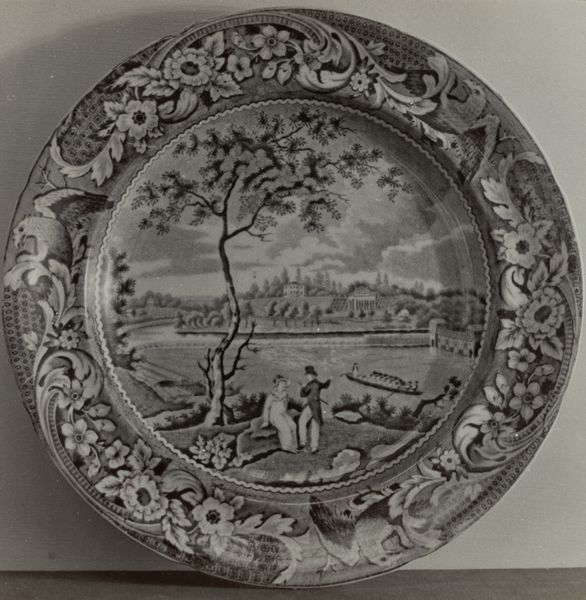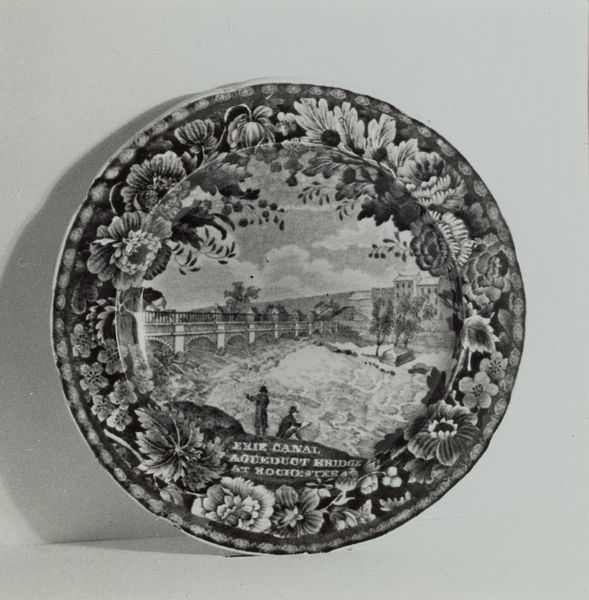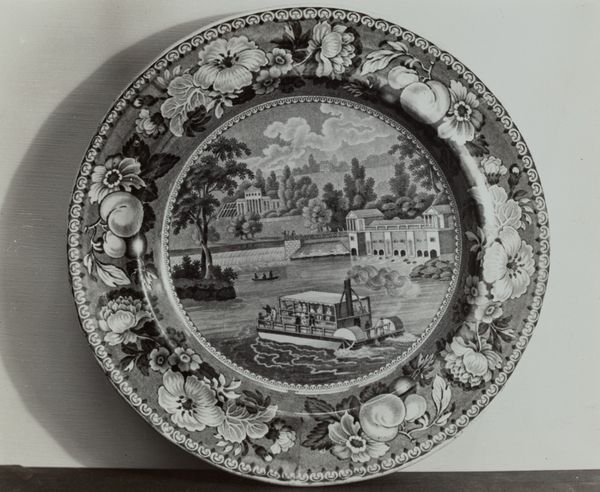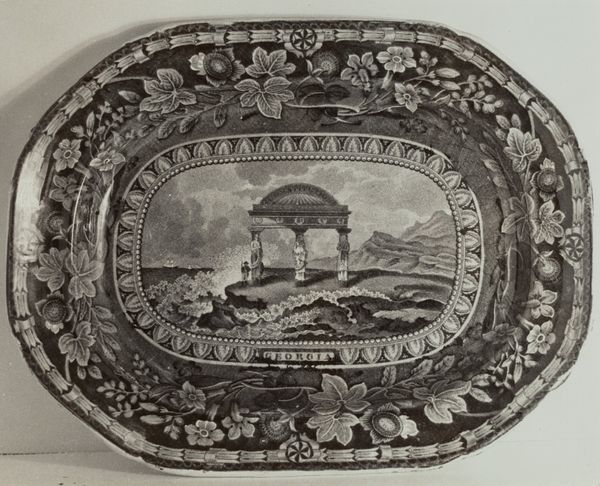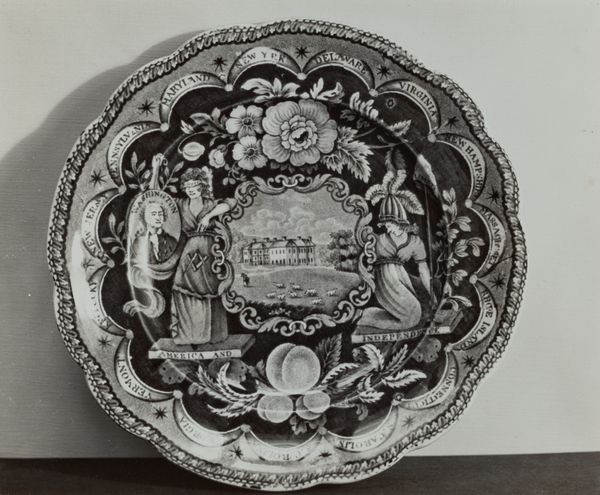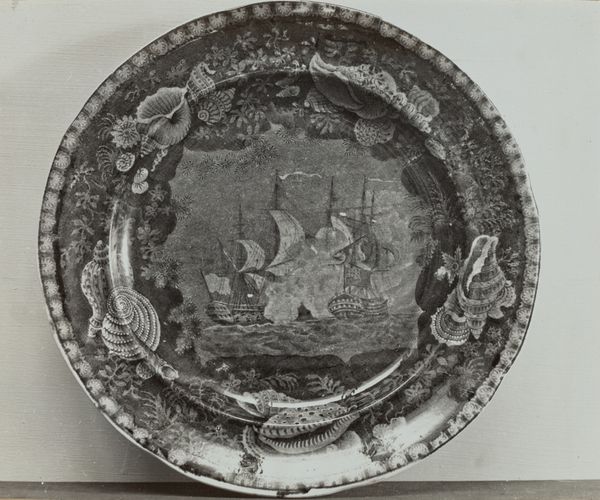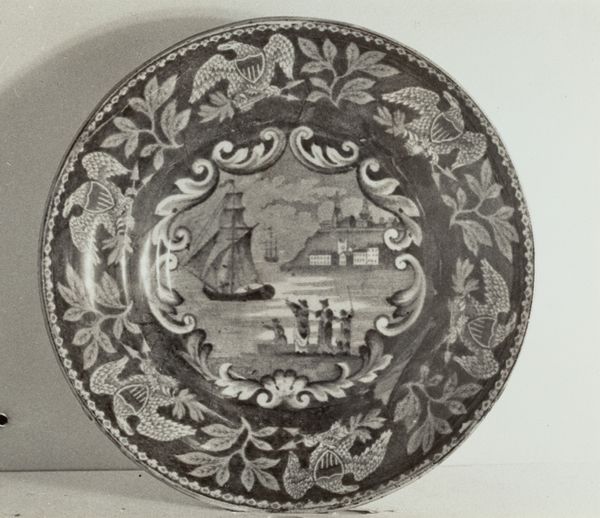
drawing, print, etching
#
drawing
# print
#
etching
#
landscape
#
genre-painting
Dimensions: overall: 20.3 x 25.4 cm (8 x 10 in.) Original IAD Object: 9 1/8" in diameter
Copyright: National Gallery of Art: CC0 1.0
Curator: This piece is a transfer-printed earthenware plate, dating to around 1936. It's titled "Baltimore and Ohio Railroad." Editor: It feels immediately…nostalgic, almost in a bittersweet way. Like peering into a faded photograph album of someone else’s memories. The monochrome palette enhances that feeling of a distant past. Curator: Transfer printing was popular for mass-producing ceramics with detailed imagery. This particular design uses a genre scene to romanticize industrial progress, depicting an early train against a pastoral landscape. It really taps into the mythology of westward expansion and technological innovation. Editor: The central image, contained in that clean circle, offers a contrasting feeling from the decoration around the edge. Look closely, there's flora, fauna and these scallop shell cartouches. That strange combination hints at the ocean trade of the company in question. Almost a maritime memory, like a sailor bringing tales from abroad. Curator: Precisely! The shells point to international commerce, suggesting access to exotic resources—this plate becomes not just a souvenir, but a statement about the railroad's global reach and influence. Consider, too, how the train becomes a symbol of connection, overcoming geographical boundaries. It compresses time and space in the image. Editor: So, it's not simply a pretty plate, but a multilayered emblem of ambition and transformation? I mean, I still find that mix of pastoral ideal and industrial machine jarring, though! Does that speak to any contemporary anxieties of that period? Curator: The 1930s saw growing pains with rapid urbanization and economic shifts during the Depression. That juxtaposition might be highlighting both pride in progress and perhaps an undercurrent of unease at the changing world—an elegiac note, certainly, amidst all the technological triumph. Editor: I'm now looking again at this and imagining folks eating their dinners off a monument to industry... or dreaming of somewhere far away, spurred on by those shell-like forms. It’s a curious marriage of the domestic and the monumental, I would never expect it. Curator: The intimacy of the object—the plate, designed for daily use—amplifies its symbolic weight, doesn’t it? The railroad company hoped to bring a sense of expansion into every home, I guess, but this can show so much more than it tried to tell... Editor: Exactly, sometimes it's more rewarding to not tell a direct story, in a very clever and artistic way. That’s something worth dwelling on as we wander around the gallery, right?
Comments
No comments
Be the first to comment and join the conversation on the ultimate creative platform.

